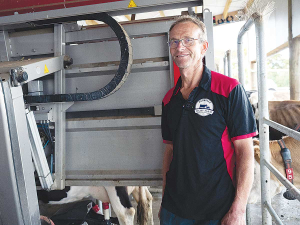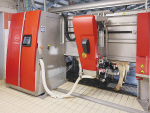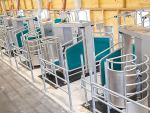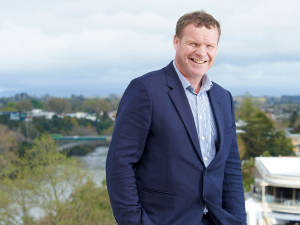The De Leeuw family has been running their dairy farm in Kaitake, Taranaki, for over 20 years.
Starting with 70 hectares, they have expanded their operation to include 13 hectares of support land for wintering. The farm is a testament to their dedication and hard work, as they now milk 235 cows with plans to increase to 250 in 2025.
André De Leeuw, originally from Holland, grew up on a dairy farm that had been in his family for three generations. Seeking more opportunities and fewer regulations, André moved to New Zealand in 1999.
“Farming was always a part of life,” André says. “We didn’t go on holidays much, maybe once or twice a year for a day. It wasn’t as easy to leave and get off farm compared to now.”
Before switching to robots, André and his family milked in a 22-aside herringbone. However, the challenges of conventional milking, such as the need for constant manual labour and reliable staff, prompted André to consider robotic milking systems.
“We saw robots at field days and in a few farms in Holland,” André explains. “After discussing it with Steve Bromley, we realised that with our numbers, the cost difference between a conventional shed and a robotic one wasn’t that significant.”
The decision to switch to robotics was driven by multiple factors. They wanted to future-proof their farm, manage labour more easily, and reduce the physical strain on themselves, André says.
“Plus, with robotic milking, you get milk information from every individual cow, every milking. The level of quality control and the ability to feed cows according to their production was something we couldn’t achieve with a conventional system.”
Implementing the robotic system required careful planning. “We set a date in advance, and about a week before, everything was doublechecked,” André recalls.
“The transition went smoothly, and the cows adapted within a month.
“At the beginning I thought you had to be good with computers and I didn’t like them, but the computer program is a lot easier and user friendly than I thought.”
Since switching to robotic milking, the De Leeuw farm has seen numerous benefits.
“The cows are happier and there’s a lot less lameness. That’s something that I didn’t realise robots would make that much of a difference to. After the robots, lameness pretty much disappeared, so that was great.”
Andre adds that the individual take-up of the cups ensures there’s no over-milking, and cows are only milked when needed.
“I can make breakfast for the kids or take them to school,” he says. “There’s less strain on my body, and we have more information on our animals. We can now feed high-producing cows better, and our production gains have come out of being able to look after these cows better.”
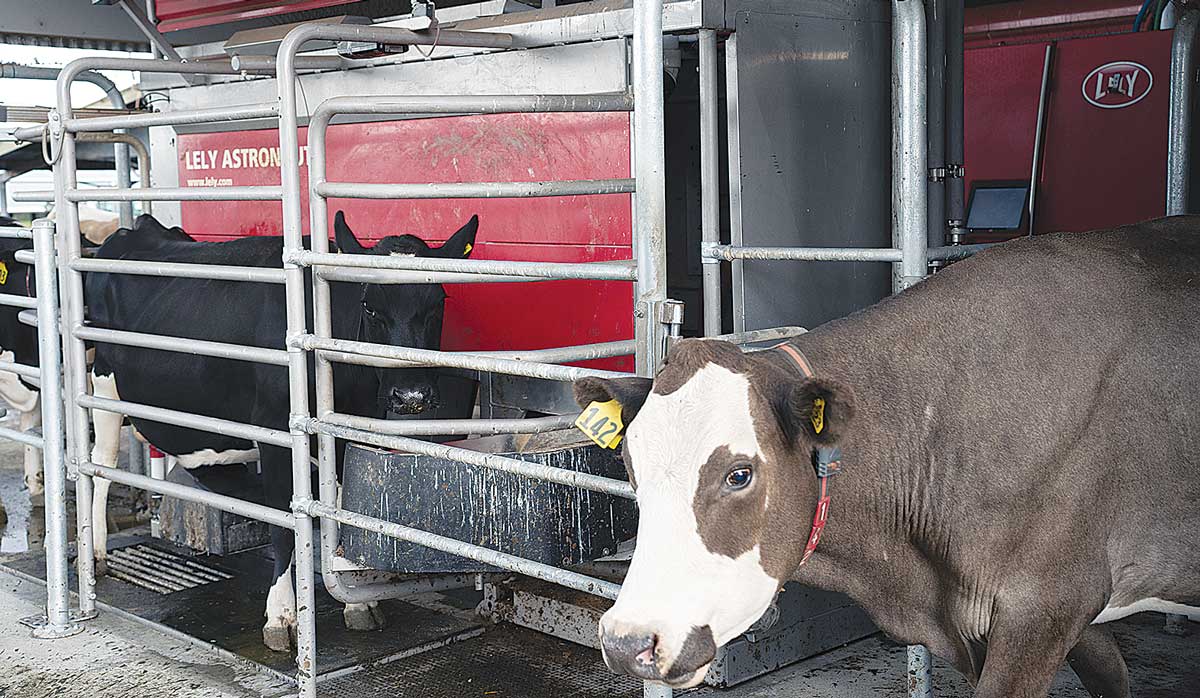 |
|---|
|
Before switching to robots, André and his family milked in a 22-aside herringbone.
|
Looking ahead, the De Leeuw family has ambitious plans for their farm.
“We’re ideally located, not too far from town,” André explains. “Our goal is to increase our herd from 240 to 300 cows and fully utilise our four robots. If more land becomes available, we might expand further.”
Andre says his goal has always been to do well over 100,000 milksolids but they found it hard with a conventional shed.
“You’re limited on what you can do; you can’t reward those higher producers unless you make separate groups. We’ve done that sometimes, split up the herd for preferential feed, but we still struggled to get production up.
“But with this system, we’ve had better production.”
The De Leeuw family’s journey from traditional milking to robotics showcases their adaptability and forward-thinking approach.
Their story is a testament to how embracing technology can lead to a healthier, more efficient, and more sustainable dairy farming operation.





